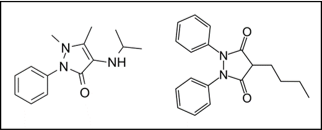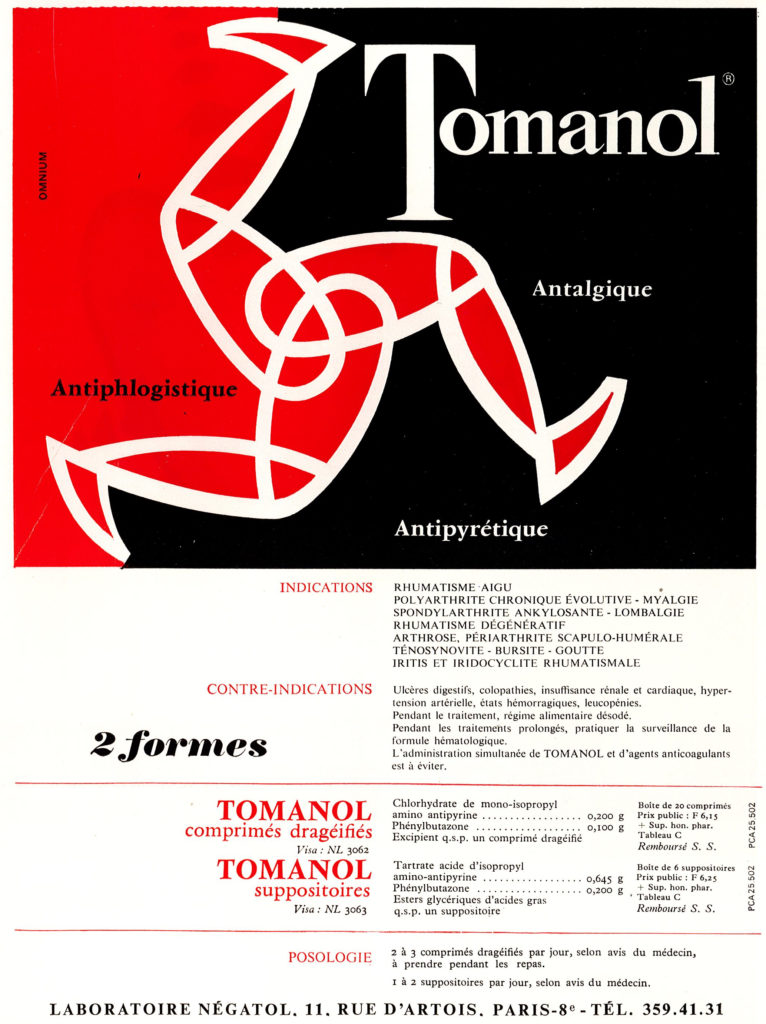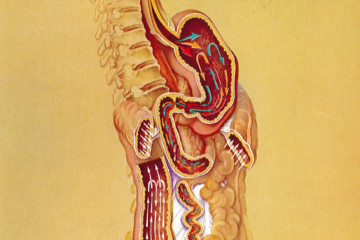The drug Tomanol® was used to treat inflammatory diseases such chronic polyarthritis and different types of rheumatisms. There was two galenic forms: a sugar-coated tablet and a suppository. The two forms contained the same two active pharmaceutical ingredients (API), but in different proportions. The two API were (i) phenylbutazone, a classical nonsteroidal anti-inflammatory drug (NSAID) and (ii) the antipyrine derivative known as ramifenazone (or 4-(isopropylamino)antipyrine) also a NSAID. This later product has not been frequently used, in contrast to its parent analogue antipyrine (phenazone), which is one of the most classical pyrazole-based drugs used to treat inflammation-related diseases.
Tomanol® was used to reduce pain (antalgic action), fever (antipyretic action) and inflammation (antiphlogistic action). These three activities represented the pillars of its mechanism of action, hence the representation of the drug functioning, with three legs rolling. Tomanol therapy was popular in the early 1960s to treat rheumatisms and arthritis. The drug is no longer used today but phenylbutazone and antipyrine (first commercialized in 1887) remain largely used. New molecules containing an antipyrine moiety continue to be developed to treat inflammatory diseases, but also antiparasitic and antiviral diseases.




